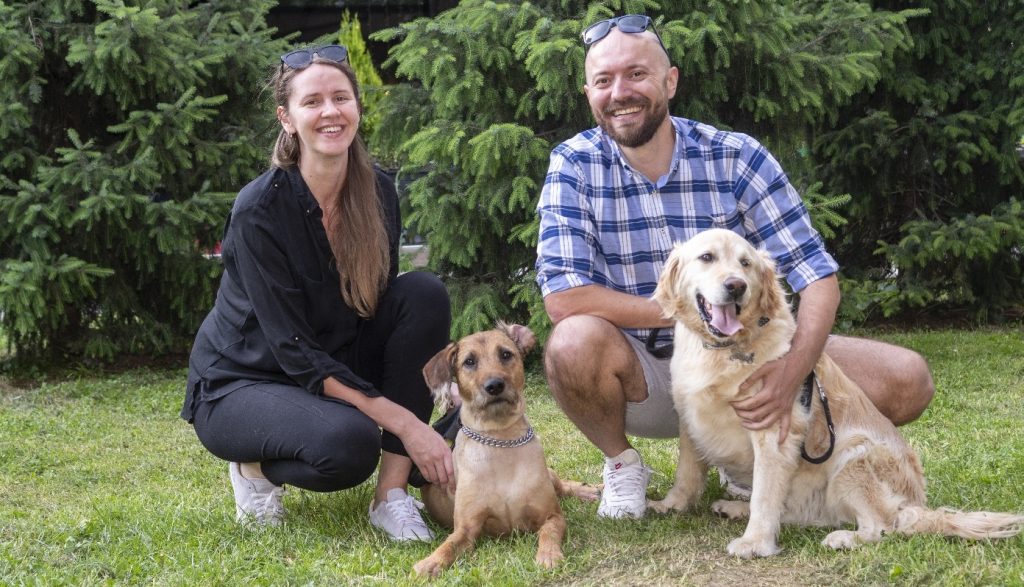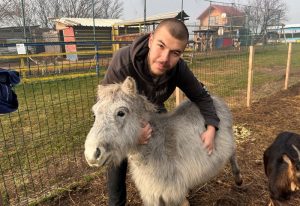What is the Fostering Scheme
The term “Fostering” is relatively new in our area, but this concept has existed in various forms for a long time and is used in the adoption of rescued animals.
In short, a rescued animal, instead of being placed in an often overcrowded shelter, comes to the home of its temporary adopter/foster, who takes care of it until permanent adoption.
The fostering scheme can function independently, or in support of transitional, legal and humane shelter. The shelter uses the Fostering scheme most often if the rescued animal has special requirements or is too sensitive to contact with other animals.
However, for this scheme to operate independently, it is crucial that it operates under detailed standard procedures which ensure the welfare, health and safety of both the dog and the temporary foster family/foster.
Before coming to a temporary home, it is crucial to:
- That the dog has been evaluated for behavior, needs and character
- That it has been determined that the dog’s needs and character match the capabilities of the foster/temporary owner
- That the vet examined the dog and confirmed that it is healthy
- That the dog is bathed, cleaned of intestinal parasites, vaccinated against infectious diseases and rabies, and microchipped
- That the foster/temporary owner is familiar with the needs and methods of care for this particular dog
- That there is a support system (within the fostering scheme) for the temporary owner
- That there are tools and channels to promote the permanent, happy adoption of a dog
Dogs Trust model – principle of “matching”
The principle of “matching” implies matching the needs and character of the dog with the capabilities and lifestyle of the owner. This method is important not only for adoption, but also for any responsible and efficient acquisition of a pet in general. this method ensures that the dog adapts perfectly to its new home, and that the owner takes care of its needs without stress, which certainly strengthens the bond between owner and pet and prevents abandonment, which unfortunately happens without this assessment.
Dogs Trust in BiH does not have its own adoption center or any other place where it takes care of dogs. That’s why a fostering program/scheme was established, which aims to raise awareness of the importance and advantages of adoption, the adequate selection of a pet in accordance with its needs and the owner’s lifestyle, as well as education about the efficient functioning of foster adoption, and the happy and permanent adoption of as many rescued dogs as possible. .
Fostering volunteers/temporary owners/fosters are a key link in protecting the well-being of the dogs they care for, because it often happens that the foster is actually the rescued dog’s first contact with life in a home. Fosters are also important for gathering information about the dog’s needs and characteristics that cannot be known before living in a home, which means that thanks to this valuable information, the dog is looking for a home that best suits both him and the permanent owner.
Are you the right candidate for foster care?
If you love dogs but aren’t quite sure you can make a permanent commitment and don’t know the dynamics of living with a pet, this could be a great opportunity to help a rescued dog and allow you to make the decision.
If you have already been, or are still a pet owner who is tolerant of other dogs, and you want to help abandoned dogs, this experience will be truly rewarding for you.
Selection of foster/fostering volunteers in the Dogs Trust Fostering program
To start the process of becoming a Dogs Trust Fostering volunteer, the first necessary step is to complete the detailed application found HERE .
Anyone who loves dogs and has the ability to temporarily care for a rescued dog while Dogs Trust is looking for a permanent home can apply, but to make sure you qualify, please see the most important requirements below. Keep in mind that your care for a foster dog usually lasts about a month, but sometimes it can take up to two months.
The conditions were created both because of limited resources and because of the different needs and characters of the dogs, and to make the experience for both the dogs and the fostering volunteers as positive as possible.
- That you are at least 18 years old
- That all housemates agree to be a fostering volunteer
- That you live in the region where Dogs Trust implements this program (currently it is only the Sarajevo region (KS, East Sarajevo)
- That you are flexible in terms of time, i.e. that you or a family member can take care of the dog for most of the day
- That you have the emotional resilience needed to say goodbye when a foster dog finds a permanent home
- If you live in rented accommodation, to get written permission from the landlord that you can keep a dog in the home
- That you have the possibility of transporting the dog to scheduled appointments in the assigned veterinary clinic
- That there is no animal living in your household suffering from an incurable infectious disease such as active internal parasites, and that all other animals living in the household are vaccinated and tolerate other dogs well
- That there is no one in the household who is susceptible to diseases due to a weakened immune system, which is known as immunocompromised
Foster and other household members who will be caring for the dog are recommended to receive adequate tetanus protection and rabies vaccination.
If you want to become a Fostering volunteer and you have children
One of the reasons why families get a dog is the great desire of children to have a pet. However, although the benefits of growing up with a dog are many, it is very important that you understand that caring for a pet belongs exclusively to adults.
Most children develop a happy and healthy relationship with dogs, but in order for both the children and the dog to be as safe as possible, it is important to set basic rules in their relationship:
- When meeting a dog, children should be calm and quiet, and allow the dog to approach them when he is ready.
- When he is ready, the dog will approach the child to smell him, and the child should be patient and only after the responsible adult confirms that the dog is in the mood for petting, gently stroke the dog’s fur, and not near the mouth or tail
- Teach children never to disturb the dog in their safe resting place, or when they are eating or sleeping
- In the vicinity of the dog and especially in the interaction, children must always be supervised and never alone with the dog
- Find out a lot more about the principles of child safety in contact with and around dogs on our website where you can find a number of resources
Establishing fostering schemes can be challenging, so Dogs Trust offers its advisory support in this to all interested local authorities and registered non-governmental organizations that cooperate with law-bearers and clients within the Humane System for Dog Population Management.
Find out more information and resources about the implementation of this Dogs Trust program at www.dogstrust.ba .

Source: urbanmagazin.ba









